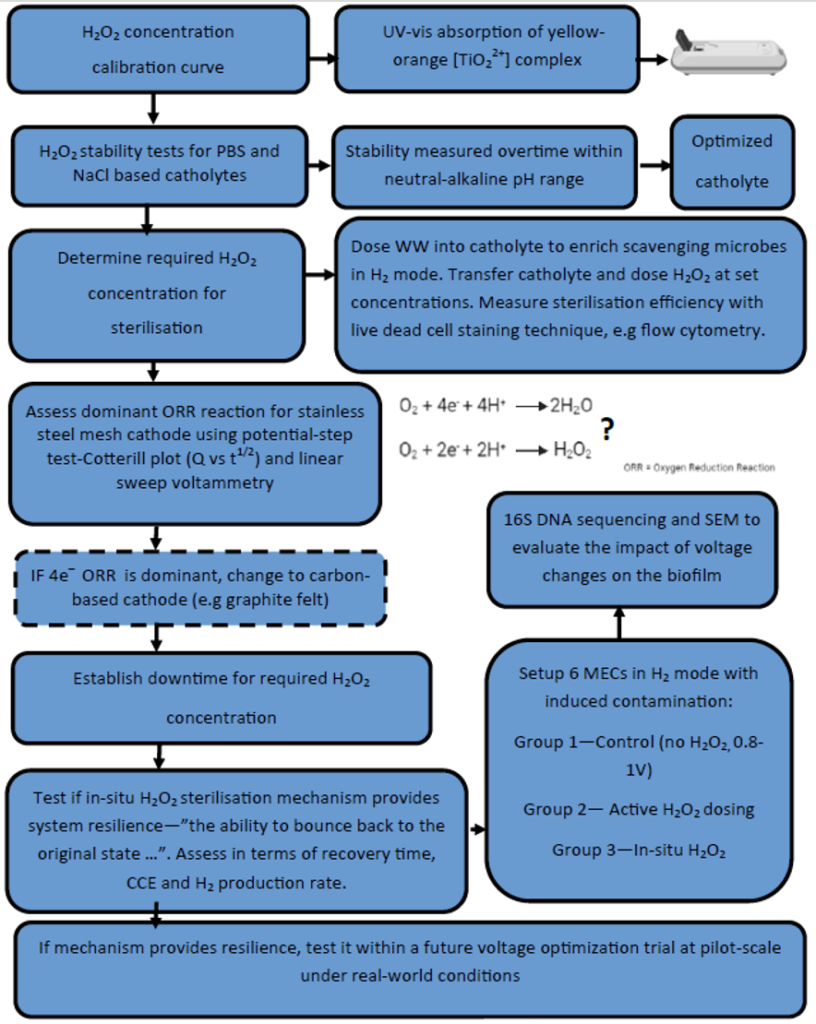Meet Sam Settle
Email: s.settle2@newcastle.ac.uk
Academic and Industrial affiliations: Newcastle University and Northumbrian Water Ltd
Title of research project: Developing large scale MECs for treatment of sludge return liquor

For UK’s water companies, discolouration of the drinking water is the main source of customer complaints. Drinking Microbial electrolysis cells (MECs) utilise an electroactive biofilm to degrade organic pollutants into electrons which are involved in proton reduction to form H 2 gas. Hence, these systems are currently being considered as a potential option for achieving net zero carbon emission and even energy-positive wastewater treatment (where the energy gained in the recovered H 2 is greater than the energy input to drive the electrochemical reaction). Commercialisation of MEC is still a long way off, with only a handful of ‘pilot’ L-scale reactors been tested on real domestic wastewater at WWTP which have achieved sub-optimal performance. A significant issue appears to be that H 2 production rates and cathodic coulombic efficiencies (moles of H 2 physically recovered / theoretical moles of H 2 that could be recovered based on measured current) are low. This prohibits MECs for real application, both economically (as this technology is expensive to construct, therefore, H 2 production rates need to high enough to allow for an acceptable payback time) and environmentally (the technology needs to be competitive against current and new WWT options in terms of global warming potential emissions). A previous pilot trial identified H 2 -scavenging microbes at the catholyte as a major H 2 sink. The first objective of the project is to develop and test a periodic self-cleansing mechanism based on in-situ peroxide production at the cathode to eliminate the H 2 -scavengers, which in turn improves system resilience and energy performance (refer to graphical abstract for proposed methodology). If the mechanism provides the necessary resilience in the laboratory, it will be trialled during a pilot-trial under real world conditions. The primary objective of the pilot-trial will be to investigate intermittent voltage input as an operating philosophy in terms of improving H 2 yields, wastewater treatment and energy efficiency compared to constant voltage input.

